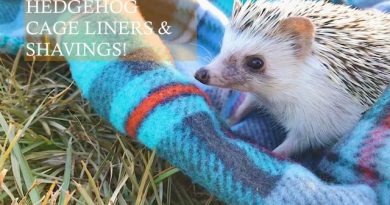Hedgehog Care 101 – Your Pet Hedgehog Guide
History of Hedgehogs
Hedgehogs, with their loving appearance and strange behaviors, have attracted the attention of nature enthusiasts.
These small (measuring around 6″ to 14″ in length) spiky mammals belong to the family Erinaceidae, and are recognized for their particular features, including their protective quills and characteristic habits.
They are found in various parts of the world, including the UK, the US, and some Asia-Pacific countries, and have become a subject of study for their incredible adaptations – that is why they have become slowly domesticated.
What Else Are Hedgehogs Called?
Hedgehogs are also called urchin, hedgepig, and furze-pig, which depends on the region they are found in.
One awesome name found around the world is the nickname “the gardener’s friend” due to their capacity for consuming insects, snails, crickets, and other small pests that can damage gardens.
What Defense Mechanisms Do They Have?
They boast a stout body covered in a layer of sharp, keratinous spines, which serve as their primary defense mechanism. When feeling threatened, they curl into a ball, exposing their quills as armor protecting themselves from attackers; that includes humans.
Another form of defense is their sense of hearing and a precise awareness of their surroundings. This helps them navigate their environment and evade any potential harm.
This intriguing display of self-defense has contributed to the hedgehog’s iconic image.
How and What Do They Hunt?
Even with the quills layer to their advantage, they prefer to hunt for food in the dark often emerging from their well-hidden daytime shelters.
Yeah, it may not be easy to hunt with poor light conditions, but they have another trick – a strong sense of smell aids them in finding their preferred diet. Their diverse dietary showcases their adaptability and crucial role in maintaining ecological balance.
Wrap Up
As we go deeper into the world of hedgehogs, it is clear that their importance goes beyond just a charming look.
These interesting (and smelly sometimes) tiny creatures have an essential role in the web of life within their ecosystems, helping us remember that every single living creature plays a role in this ecosystem.



